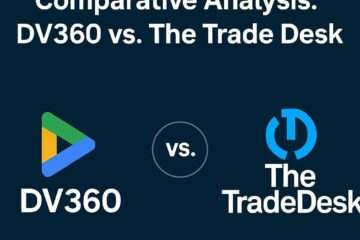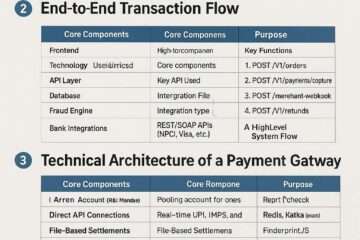

In the near future, buyers will have far more access to the video ad inventory that is sold on Google’s network.
As per the news Google demand-side platform, DV360, has already started using the new video.plcmt field from the IAB Tech Lab in OpenRTB bid requests. Publishers and SSPs classify their material in this field using the new video categorization rules from the Tech Lab.
Google claims that since last year, DV360 has been consuming the video.plcmt field. As long as the seller’s SSP is providing the video.plcmt value in bid requests, buyers can view how a publisher categorizes its content in DV360, according to an agency source .
Therefore, buyers will be prepared to modify their offers in DV360 based on the new standard definitions on April 1, when Google starts requiring publishers to include the video placement field in all AdX bid requests.
While the move may eventually result in greater bids for certain video placements, these developments have publishers and video platforms concerned that Google demand may no longer bid on substantial portions of its classed video inventory.
Instream no longer?
The IAB Tech Lab established three new subcategories for what was previously considered outstream—”accompanying content,” “interstitial,” and “no content/standalone”—and defined a restrictive definition of instream video when it unveiled its video rules in March of last year.
Users must arrive on a page expecting to watch video and with sound enabled for it to be considered instream inventory. CTV or YouTube would be acceptable.
Contrary to accompanying material, which is video that isn’t the main attraction on a page but still includes advertisements and some sort of content, instream is different. Accompanying material would include things like autoplay and muted video in a floating player.
Publishers could previously categorize what is now called accompanying material as instream in AdX, according to Eric Hochberger, co-founder and CEO of Mediavine, a platform for publisher monetization.
However, publishers are required by the new criteria to properly identify any supporting content in the video as such.plcmt field; given that they have a better understanding of it, Google advertisers might start making cheaper bids for this inventory.
Once instream is more clearly defined within Google AdX, buyers will pay a considerably larger premium – comparable to CTV, according to the anonymous agency source. The insider also mentioned that as most consumers would like to be able to stay away from floating players, pricing for supplemental material will probably decrease dramatically when compared to instream.
Prices might increase, though, if some advertisers decide to bid competitively on accompanying content through Google’s platform because they value it.
According to the agency source, a buyer might, for instance, prefer somewhat less expensive video content that nonetheless meets its performance targets. These purchasers might benefit from some price flexibility in the video inventory made available through Google’s platform.
The insider stated that most businesses are currently unaware of the new standards from the IAB Tech Lab and that they haven’t even heard a client use the term “accompanying content.”
Therefore, before the majority of buyers even know how these new video classifications operate or that they have the choice to target different kinds of video inventory, some time will pass.
Google claims that users may already target many video formats with DV360 by utilizing the DSP’s current OpenRTB specs. These specifications will shortly be revised to reflect the new categories established by the Tech Lab.
A Google representative stated, “A buyer can target various inventory types in our UI, including ‘in-article,’ ‘in-stream,’ ‘in-banner,’ etc.” “A partner wishing to purchase supplemental content today could choose to target ‘in-article,’ but we will also be updating our nomenclature to reflect the new signal.”
Package deals
However, agreements that incorporate many forms of video into a single ad buy will also be impacted by Google’s implementation of the new criteria in AdX and DV360.
According to a person familiar with Google’s video ad sales, for instance, Google currently supplements instream YouTube advertising purchased through DV360 with what is now referred to as accompanying content.
Google claims that it has no plans to alter the way that it packages inventory for these kinds of offers. But now that it’s using the video.plcmt field, purchasers will know more about what they’re truly buying.
Therefore, in these situations, a buyer could request that no related information be included. It is unclear if such requests will be complied with or not.
Individual standoff
Google desire for what is currently categorized as no content/standalone inventory may rise, notwithstanding concerns regarding accompanying content.
What most advertisers would consider outstream video is defined by the Tech Lab as “no content/standalone” (i.e., video players that are not the focus of a page and just play adverts, without any publisher-provided content whatsoever).
According to Hochberger, Mediavine’s experience is that Google Demand handles “no-content” inventory in the same manner as display advertising. In other words, Google purchasers bid on so-called outstream video impressions at the rates for display inventory, where CPMs are significantly lower than for video.
He noted that as a result, Mediavine does not currently offer its outstream video content for sale through AdX.
“It would not be accurate to state Google currently treats all outstream video as display inventory,” a Google spokesman said in response to this assertion.
The word “all” is crucial. The agency source verified that buyers do occasionally use Google’s platform to bid at display inventory prices on no-content/standalone video inventory.
Hochberger stated that Google advertisers should begin paying more on outstream, including no-content/standalone, once AdX switches to the new standards because it will be identified as a video format unambiguously. According to him, publishers might earn more money from these placements due to increased transparency. Mediavine might activate AdX for outstream in such a scenario.
The agency source concurred that if AdX properly identifies no-content/standalone inventory as video, it may fetch a higher price.
However, many uncertainties remain regarding how bidding pressure will impact prices and how auction dynamics will function once AdX and DV360 start incorporating the new video standards into bids.
According to the agency source, it’s probable that Google demand won’t completely adjust to the new requirements until a few months after April 1. This indicates that until bid dynamics gradually normalize under the new categories, publishers should anticipate short-term price swings.
Adoption of DSP
But whereas many other DSPs haven’t yet finalized their preparations for supporting the new OpenRTB values, DV360 will be prepared to absorb the new video categories when AdX starts passing them next month.
Luca Bozzo, head of programmatic operations and partnerships at Connatix, a video platform that has long specialized in what is now termed accompanying content, stated that “no DSP has fully implemented the Tech Lab’s new video guidelines.”
He stated, “At this time, buyers are not able to bid specifically on accompanying content through any DSP; the Trade Desk (TTD) and DV360 are only ingesting the new values.” “As purchasers adjust their tactics, TTD is probably witnessing a substantial demand for supplemental information, but they are unable to act.”
Therefore, it is yet unclear how these new designations will affect prices after DSPs begin use them to modify bids.
Several publishers told that, depending on how much autoplay video inventory they had, they witnessed declines in video ad income of 20% to 63% when testing the new video standards in AdX.
But when taking into consideration other SSPs, the majority of which have been passing the updated video. Publishers reported an average decline in their video revenue of only 15%, therefore plcmt spec has been a feature in their bid submissions for some time.
Once DV360 purchasers may adjust their bids appropriately, the remaining 15% gap might be filled.
However, it’s difficult to predict how the dynamics of pricing and demand will shift even more when additional DSPs—the bulk of which have not yet done so—implement the new criteria.
The only other party that answered in time for publication was Viant, with TTD confirming that it started applying the requirements last year.
Viant claims to be testing whether or not the way publishers categorize video inventory enables advertisers to meet the KPIs they would anticipate from those kinds of video advertisements. However, Viant hasn’t applied the new criteria to their entirety.
A Viant representative stated, “It’s important to note that definitions like video.plcmt are self-reported, even though incorporating more signals could enhance the purchasing decision.” Therefore, in order to protect the interests of both purchasers and our clients, our primary focus is on confirming these labels.
We won’t fully know how buyers are responding to various forms of video inventory until more DSPs embrace the Tech Lab’s new video requirements, however it’s likely that greater DSP use will eventually help close the 15% revenue difference publishers are experiencing.


























































